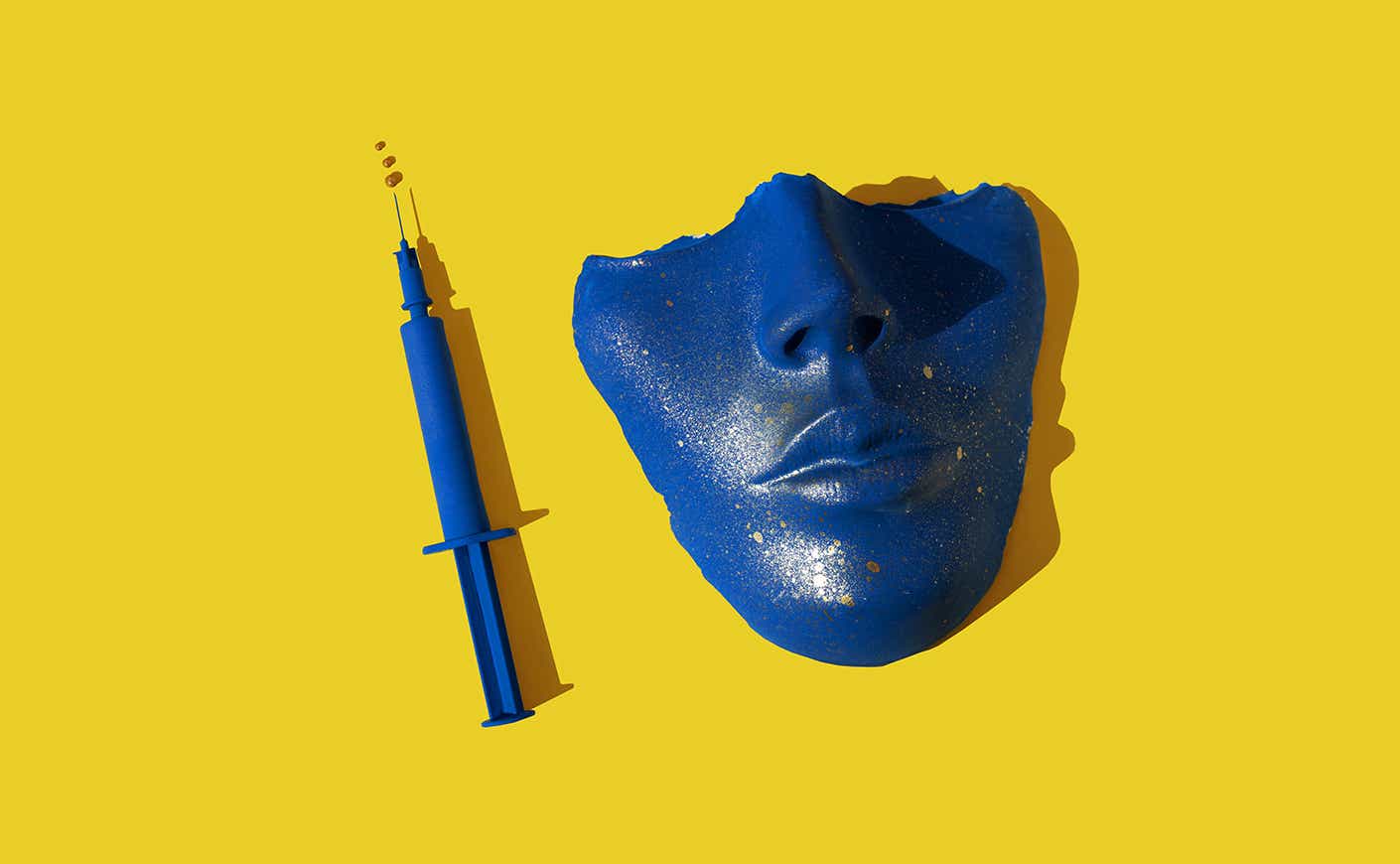With the era of the Brazilian butt lift coming to an end, a different kind of cheek has become the latest battleground in bodily modification — the one on our faces. Some people are going under the knife to take out the volume from their cheeks, while others are going under the needle to put it back in. It’s another dizzying example of beauty standards that are as fickle as Instagram’s algorithm (not to mention, just as harmful).
What is Ozempic face?
There’s been a ton of online chatter recently about Ozempic, the once-weekly injection being used as an off-label weight loss drug by celebrities and the ultra-wealthy alike. When rumors (that, to be clear, mostly have not been substantiated) spread that celebrities were using it to drop a few pounds, the demand reached such a fever pitch that it caused intermittent shortages, with reports of people with type 2 diabetes, who needed the drug to maintain their health, struggling to fill their prescriptions. Never mind the fact that Lou Aronne, M.D., FACP and director of weight management and metabolic clinical research at Weill Cornell, says Ozempic — and the similar drugs Mounjaro and Wegovy — are meant for people who are about 50 pounds overweight. “It’s not for somebody who’s 10 pounds overweight and wants to look good in a bathing suit,” he said.
And while Dr. Aronne says the safety of these drugs hasn’t been tested in people aiming for modest weight loss, there’s another reason to be wary of using it beyond its intended purpose (if safety and its exorbitant price aren’t quite enough): Some people who’ve lost weight using Ozempic are complaining it’s caused them to look older because of what’s been dubbed as “Ozempic face.”
Some who’ve used Ozempic told The New York Times that they’re happy with their overall weight loss but not so thrilled with how that weight loss is changing their face. That’s because one sign of facial aging is fat loss and shifting, which can lead to hollow cheeks and loose jowls — both of which can happen on Ozempic.
Anyone who was around during the peak of 90s diet culture has probably had it drilled into their heads that fat is the enemy. But body fat (or adipose tissue) serves a lot of important functions, like insulating us from the cold and heat, and regulating glucose and cholesterol. It’s also important when it comes to aging.
Oren Tepper, MD, a New York-based plastic surgeon, told NYT, “When it comes to facial aging, fat is typically more friend than foe. Weight loss may turn back your biological age, but it tends to turn your facial clock forward.”
That’s leading some with “Ozempic face” to turn to cosmetic procedures to inject volume back into their faces. Dhaval Bhanusali, MD, a New York-based dermatologist, told NYT he uses a combination of Radiesse and Sculptra, both dermal fillers, to add some heft back into the facial hollows of Ozempic users. Fillers typically cost a few hundred dollars per syringe, but those looking for even more dramatic or long-lasting results (and who aren’t afraid to go under the knife) can opt for a deep plane facelift, which can cost a whopping $75,000.
The flip side
Yet, in a truly “we can’t win” moment, while some people want to put fat back into their faces, others are going to extreme lengths to remove it. Buccal fat removal, a process that thins out the cheeks by removing a pad of fat called the — you guessed it — buccal fat pad has been sweeping Hollywood. Although there aren’t many celebrities who’ve confirmed having the procedure (Chrissy Teigen is one of the few who has copped to it), rumors have swirled about a number of stars, like Lea Michele, Zoe Kravitz, and Bella Hadid. Andrew Jacono, MD, a New York City-based plastic surgeon, told NYT he did “three times as many buccal fat reductions” in 2022 than he was five years ago.
A key difference between who’s taking fat out of their face and who’s putting it back in is age. Dr. Bhanusali told NYT that the patients he sees with Ozempic face are generally in their 40s and 50s, “who are losing significant amounts of weight and are concerned about facial aging and sagging that occurs as a result.”
Meanwhile, Michael Dobryansky, MD, a plastic surgeon at New York Plastic Surgical Group, tells Katie Couric Media that most of the patients he sees for buccal fat removal are in their late 20s to early 40s.
Buccal fat removal surgery, which can cost between $5,000 and $20,000, is permanent. It can be good for “younger patients with a heavy lower mid-face,” Dr. Dobryansky says, but there is a catch: “If it’s overdone, they may miss their buccal fat 10 years down the line.”
Facing the facts
Removing fat from your face, adding it back — it’s enough to make the average person’s (under-contoured, or maybe too full-looking?) head spin. But before you go prodding your cheeks in front of the mirror, it’s important to consider that there will always be some new bodily “flaw” that social media tells us needs changing.
And while it might seem like everyone is all of a sudden obsessed with their cheekbones, Dr. Dobryansky says the fascination with facial fat is nothing new — it’s just that “social media definitely now plays a role in what aesthetic procedures are being considered ‘trends.’” And like all trends, this cheek-based obsession is temporary, but changes to your face can last forever.












